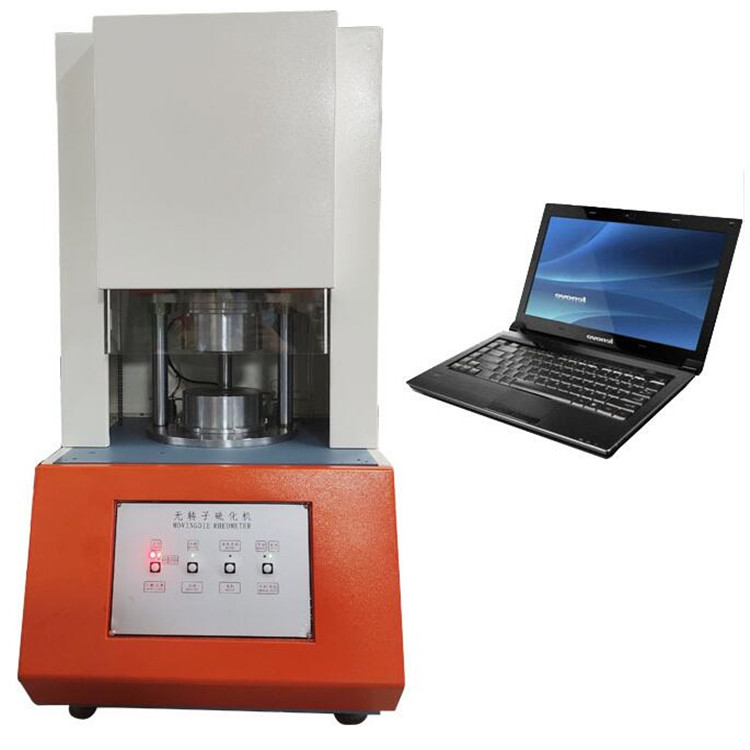Thời gian: Nhân khí:0Thời gian
 Applicable Standards:
Applicable Standards:
Main Parameters (Table 1):
| Parameter | Range/Specification |
|---|---|
| Temperature Control | 100–200°C (±0.3°C stability) |
| Oscillation Frequency | 1.7 Hz (standard), 0.5–2 Hz adjustable |
| Strain Amplitude | ±0.5° angular or ±0.05 mm linear |
| Torque Measurement | 0–20 N·m (resolution: 0.001 N·m) |
| Sample Volume | 3–5 cm³ (cylindrical mold) |
| Data Output | Real-time torque-time curves |
Working Principle:
The tester operates by sealing a rubber specimen in a two-part mold cavity. One section oscillates with a small-amplitude motion (angular or linear), inducing shear strain, while the other remains stationary. A transducer measures the torque response, which correlates with the material’s viscoelastic changes during curing. Key metrics derived include:
Test Principle:
The test simulates industrial curing conditions by heating the specimen to a predefined temperature. As crosslinking begins, the torque increases due to rising shear modulus. The instrument plots torque vs. time curves, enabling calculation of cure rates and activation energy. Advanced models incorporate temperature compensation algorithms to minimize thermal gradients, ensuring repeatability. By comparing torque increments (e.g., 90% of MH), manufacturers optimize formulations for specific applications, such as high-rebound soles or oil-resistant seals.
Applications:
This equipment’s precision and compliance with international standards make it indispensable for modern rubber labs, ensuring products meet durability and safety requirements.
Điện thoại công ty
+86-21-6420 0566
Thời gian làm việc
Thứ Hai đến Thứ Sáu
Điện thoại di động:
13816217984
Email:
info@qinsun-lab.com
